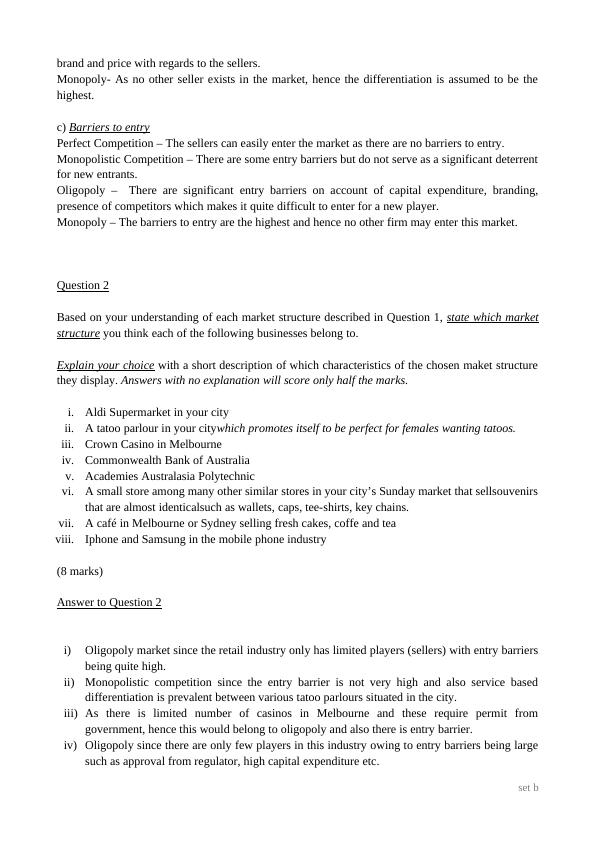Market Structures and Non-Price Competition in Economics
Compare the market structures of Perfect Competition, Monopoly, Monopolistic Competition and Oligopoly under different headings and identify the market structure of given businesses based on their characteristics.
5 Pages1303 Words284 Views
Added on 2022-11-14
About This Document
This document discusses the different market structures, including perfect competition, monopoly, monopolistic competition, and oligopoly, and compares them based on the number of firms, similarity of products sold, and barriers to entry. It also explains non-price competition and provides examples of how firms engage in it. Additionally, it defines mutual dependence and explains how it works in oligopoly. Finally, it discusses the kinked demand curve and how it is found in oligopoly markets.
Market Structures and Non-Price Competition in Economics
Compare the market structures of Perfect Competition, Monopoly, Monopolistic Competition and Oligopoly under different headings and identify the market structure of given businesses based on their characteristics.
Added on 2022-11-14
ShareRelated Documents
End of preview
Want to access all the pages? Upload your documents or become a member.
Market Structures and Barriers to Entry in Economics
|6
|914
|443
Economics for Business
|5
|1060
|391
Tax Benefits to Existing Firm | Assignment
|8
|1227
|85
Economics Assignment: Market Structures, Non-Price Competition, Mutual Dependence, Kinked Demand Curve
|8
|1536
|170
Economics: Market Structures, Game Theory, Price Discrimination
|9
|1145
|69
MICROECONOMICS STUDENT ID: [Pick the date].
|5
|430
|21


